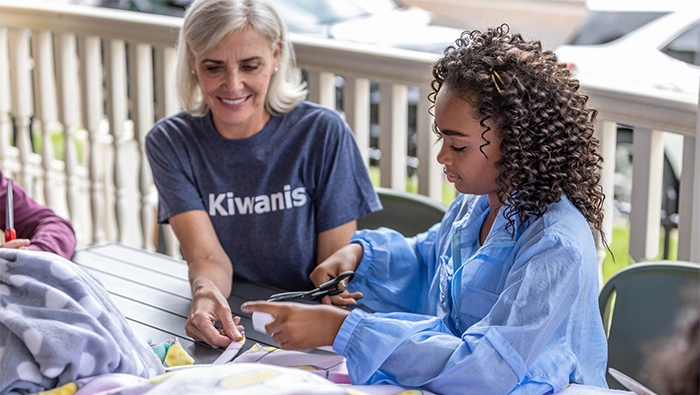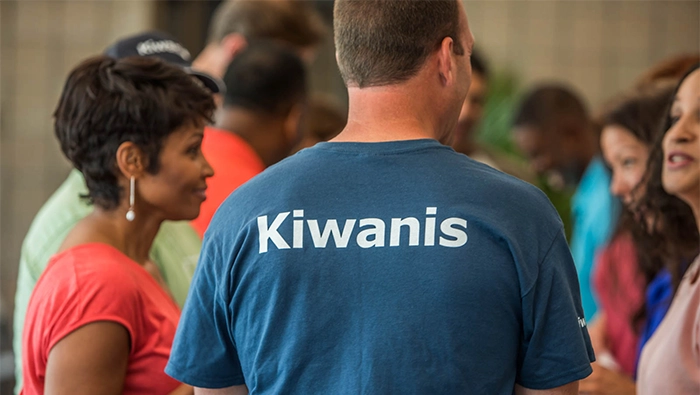Kiwanis leader Bobby Quinten shares how his club recovered and thrived after a steep membership decline.
By Bobby Quinten, 2024-25 governor-elect, Texas-Oklahoma District
During the 2024 Kiwanis International Convention, Bobby Quinten hosted an education session where he described how his club — the Kiwanis Club of Mansfield, Texas, U.S. — rebuilt after a dramatic membership drop. Kiwanis International asked him to re-create that presentation in written form.
On Friday, March 6, 2020, the Kiwanis Club of Mansfield held its weekly breakfast meeting at Methodist Mansfield Medical Center. My home club counted 25 paid members and averaged eight to 12 attendees, along with a few Key Club students, each week. We sponsored six Key Clubs in the Mansfield Independent School District and supported the local Feed the Kids for Summer program.
On March 12, the medical center said we could not return due to the coronavirus outbreak. Our club thus began a seven-month odyssey of canceled meetings, awkward Zoom calls — even meeting in the park. By October, when we landed in a church classroom, our membership had dropped from 25 to six. Nineteen members had fallen away through a global pandemic and a summer of social and political turmoil.
Thankfully, our six surviving members never thought of closing the club. Today, the Kiwanis Club of Mansfield is back to 21 members, including a corporate partner. We still sponsor six award-winning Key Clubs and now a Builders Club. We celebrated our 50th anniversary last year and earned Distinguished Club status in 2022-23.
How did that happen? Here are a few revitalization lessons that Mansfield Kiwanians learned together.
Less club, more Kiwanis
While our club may have seemed healthy pre-COVID, we had problems. Mansfield Kiwanis did very few service projects or fundraisers. In fact, half of the membership never attended anything. Those who did attend had formed cliques over time — so when one member quit, others quit.
Activities were chosen for the fun factor more than any potential community impact. Our Friday morning programs had no focus or themes. We had little meaningful contact with our Key Clubs, even though students came to our meetings regularly.
The year 2020 revealed cracks in our club structure that were already there. It is great to be a social club. Fun is an integral part of being a successful club. However, there must be a full commitment to Kiwanis along with the fun. Somewhere, Mansfield had lost its Kiwanis identity.
Leverage the uniqueness of Kiwanis
To survive, we reclaimed what makes Kiwanis unique in Mansfield. We focused on our distinct mission to improve the world one child at a time. We repledged our commitment to teach servant leadership and community service to students of all ages.
Every week, we emphasized one of our century-old Objects of Kiwanis — those behaviors that should drive every relationship and every activity in every Kiwanis club. We returned to an aggressive, hands-on volunteerism and committed to a more diverse membership and inclusive services.
Build membership through connections
It took three years, but Mansfield Kiwanis built itself back by making connections. First, we used social media and marketing to publicize meetings and activities. We joined the local chamber of commerce to strengthen our community relationships. We held programs that resonate with our mission and Objects.
However, most club growth occurred one by one: One person joined, and then that person invited someone who joined, who then invited someone else. Friends, family, neighbors, parents of Service Leadership Program members, and business partners all became a part of Mansfield Kiwanis. As we grew, we conducted service projects based on the new members’ passions and interests.
We accepted that Kiwanis is not for everyone, and that is fine. Interestingly, only one member who left voluntarily in 2020 ever returned to the club. However, when the Kiwanis mission connects with a person’s passions, any club will have active and productive Kiwanians.
Engage your members regularly
With a weekly email, a current Facebook page and a simple website, we communicated regularly with every member. Once schools opened again, rebuilding our Key Clubs became a paramount activity. We enlisted new members to become committed Key Club advisors. This rejuvenated our energy after 2020.
“Doing Kiwanis” kept our club from falling back into a social club mentality. We stayed busy and involved members according to their interests, skills and strengths. New members gave us their ideas for projects and fundraisers.
New members also provided fresh leadership. By 2023-24, our president, president-elect, treasurer and five directors all had joined since 2020! We now have more women than ever before, and we are a much younger club than before.
Keep the main thing the main thing
When we lose sight of our unique mission, resources and values, we become just another community organization. In Mansfield, we remind ourselves regularly of the Kiwanis mission and Objects.
New-member induction ceremonies always include the mission and Objects, our Kiwanis International history, our club history and SLP information. In that way, our new members also understand what makes Kiwanis special. Everyone is encouraged to spread the word about how the Kiwanis Club of Mansfield is making the world a better place for children and families.
Five questions to ask your club
Could your club use a boost? Ask yourself these five questions:
- What kind of club do we really have? Is there enough “Kiwanis” in our club?
- What makes us different from other community organizations in our town? Are we leveraging that difference to grow our club and make a greater social impact?
- Who do we know who will bring fresh ideas, perspectives and causes to our club? How will we make that connection?
- How can each member use their strengths, skills and interests to drive the Kiwanis mission?
- Do locals know our club exists? If so, do they know what we do and what impact we have? If not, how will we tell them?



